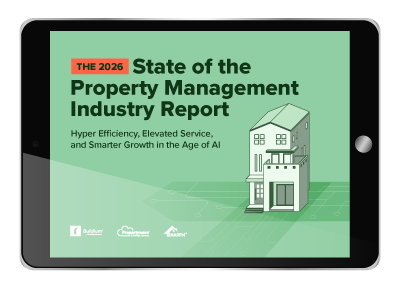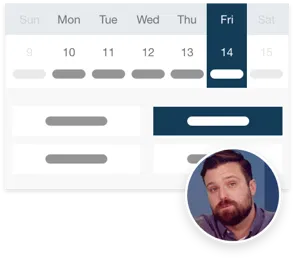As a property manager, one metric that plays a major role in the success of your rental operations is the turnover rate. Turnover rate can significantly impact your finances and operations regardless of the types of properties in your portfolio.
In this post, we’ll break down what turnover rate is, how to calculate it, why it matters, and strategies to reduce it—so you can keep your property thriving.
What Is Turnover Rate in Property Management?
In property management, turnover rate refers to the percentage of tenants who leave your property over a set period, usually a year. This number helps you gauge how often tenants are moving out and gives you insight into your property’s stability and tenant satisfaction.
Why should you care about turnover rate? When tenants move out frequently, it signals potential issues, such as dissatisfaction with the property or the neighborhood. A high turnover rate doesn’t just affect your property’s reputation—it directly impacts your cash flow and workload. On the other hand, if your turnover rate stays low, it suggests a well-managed property where tenants are happy to stay put. A steady turnover rate creates stability, reduces costs, and saves you time.
How to Calculate Turnover Rate
Calculating turnover rate is easier than it seems. You just need two pieces of information: the number of tenants who moved out and the average number of occupied units.
Turnover Rate Formula:
The formula for calculating turnover rate is simple:
Turnover Rate (%) = (Number of Units Turned Over / Total Number of Units) × 100
Steps to Calculate:
- Choose the time frame: You can calculate turnover for a month, quarter, or year. Most managers calculate it yearly to get a bigger picture of trends.
- Count the move-outs: This is the total number of tenants who left the property during your chosen time frame.
- Find the average number of occupied units: For example, if you manage a 100-unit building, and the occupancy fluctuates throughout the year, calculate the average number of occupied units across all months.
- Apply the formula: Divide the number of move-outs by the average number of occupied units, then multiply by 100 to get the percentage.
Example:
Let’s say you manage a 100-unit building and 15 tenants moved out during the year. Here’s how the turnover rate calculation looks:
Turnover Rate (%) = (15/ 100) × 100
In this case, your turnover rate is 15%, meaning 15% of your tenants left over the course of the year.
How High Turnover Rate Affects Your Property
A high turnover rate can hurt your property’s finances and operations in several ways. Let’s break it down:
Increased Vacancy Costs
When tenants leave, you face a period where the unit is vacant, and you’re not receiving rental income. Plus, each vacancy requires cleaning, repairs, and prepping the unit for the next tenant. This means more expenses and lost income during the vacancy period.
More Money Spent on Marketing and Leasing
You need to market vacant units and possibly offer promotions to attract new tenants. This costs time and money, whether it’s advertising online, hiring leasing agents, or offering concessions to fill the unit quickly. The more vacancies, the higher these expenses become.
Less Predictable Cash Flow
Frequent vacancies can disrupt your income stream. You can’t always predict when your units will be empty, making it harder to budget for expenses, maintain the property, and plan for the future.
Increased Administrative Workload
High turnover means you constantly need to screen new tenants, conduct property tours, sign leases, and handle move-ins. The more tenants move out, the more you have to do to get the units filled again, taking time away from other important management tasks.
What Happens When Turnover Rate Is Low?
While high turnover can be a burden, a low turnover rate brings several benefits. When tenants stick around longer, your property can enjoy more stability and profitability.
Lower Vacancy Costs
With fewer people leaving, you’ll have fewer vacant units. This means fewer costs for repairs, cleaning, and preparing units for new tenants. Plus, a consistent flow of rental income helps stabilize your finances.
Reduced Marketing and Leasing Expenses
Fewer vacancies mean fewer advertising costs. You don’t have to spend as much on marketing and leasing agents, and your property will spend less time sitting empty. Less work on filling vacancies means you have more time to focus on other areas of property management.
Stable Cash Flow
Having long-term tenants helps keep your cash flow steady and predictable. Instead of worrying about unexpected vacancies, you can plan better, making it easier to manage other expenses or reinvest in property improvements.
A More Satisfied Tenant Community
Long-term tenants are often happier tenants. They develop relationships with each other, feel a sense of community, and become invested in the property’s well-being. This creates an environment that encourages stability and retention.
Tips to Reduce Turnover Rate and Keep Tenants Happy
As a property manager, reducing turnover is a goal you should actively pursue. Here are some practical ways to increase tenant satisfaction and keep tenants around longer
1. Prioritize Property Maintenance
No one wants to live in a property that feels neglected. Regularly inspect and maintain your units and common areas. Fix problems quickly, whether they’re leaky faucets, broken appliances, or landscaping issues. A well-maintained property shows tenants you care and can keep them from seeking out a new place to live.
2. Communicate Openly and Effectively
Communication is key to building trust and positive relationships. Regular check-ins—whether through email, phone, or in-person—allow tenants to voice concerns before they become major issues. The more connected you are with your tenants, the more likely they are to stay. If tenants feel heard and valued, they’re more likely to renew their leases.
3. Incentivize Lease Renewals
Make renewing the lease an attractive option. Offer incentives such as a rent freeze for existing tenants or gift cards for lease renewals. These small gestures can go a long way in building goodwill and encouraging tenants to stay longer.
4. Build a Sense of Community
Create opportunities for tenants to interact. Host events, such as community cookouts or holiday parties, to foster a sense of belonging. Shared amenities—such as fitness centers, lounges, or outdoor spaces—also encourage socialization. When tenants feel connected to each other, they’re more likely to stay.
5. Review Rent Prices Regularly
Keep your rent prices competitive with the market. If tenants feel they’re getting a good deal, they’ll be more likely to stick around. Overpricing can push tenants to search for more affordable options elsewhere. Be sure to research local market trends and adjust your prices accordingly.
6. Respond Quickly to Concerns
Don’t let small issues fester. Address tenant complaints promptly, whether they’re about maintenance, noise, or security. By tackling problems quickly, you show tenants that you care about their living experience and are committed to resolving any issues they face.
Key Takeaways
Tracking and managing turnover rate is essential for property managers who want to maintain a successful, profitable rental business. High turnover rates can lead to financial instability, increased costs, and more work, while a low turnover rate signals a well-managed property with happy tenants.
To manage turnover effectively:
- Stay on top of property maintenance and quickly respond to concerns.
- Keep the lines of communication open with your tenants.
- Offer lease renewal incentives and create a strong community.
- Keep your rental prices competitive and regularly assess market trends.
Frequently Asked Questions
How often should I inspect my property for maintenance issues?
Regular inspections, such as every three to six months, help you stay on top of potential problems. By catching issues early, you can address them before they become major concerns and keep your property in excellent condition.
What are some effective ways to communicate with tenants?
Maintain open communication through various channels, such as email, phone calls, and in-person meetings. Regularly engaging with tenants helps build trust and allows you to address their concerns promptly.
How can I create a sense of community among tenants?
Host events, such as cookouts or holiday parties, and provide shared amenities, such as fitness centers or lounges. These activities and spaces encourage socialization and help tenants feel more connected to each other and the property.
Read more on
